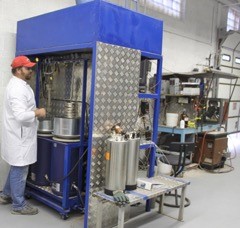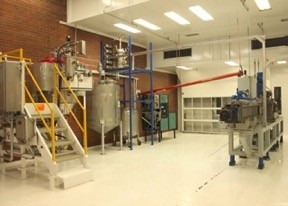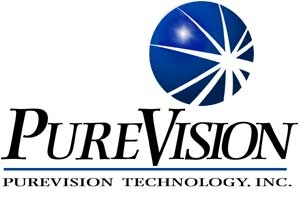The foundation of the PureVision business model is licensing specific aspects of the PureVision Technology to strategic partners and clients in exchange for a one-time license fee and ongoing royalties. This licensing strategy segments major commercial and industrial markets by feedstock type and geographical regions.
To implement this strategy, PureVision has developed a stepwise commercialization program consisting of technology verification, scale-up and deployment. The four-phase program provides clients and strategic partners with the necessary information to make critical project decisions and achieve commercialization milestones. PureVision has successfully completed several Phase 0 pre-development programs and Phase I programs and is currently planning its Phase II project incorporating a small commercial scale CCR.
Once proven at the demonstration scale and during its Phase II program, PureVision plans to deploy a 60-ton/day, industrial size CCR during Phase III. Once perfected at this scale, additional 60-ton/day CCR lines can be added to process local biomass into value-added products. Phase IV is the global deployment of CCR-based biorefining technologies in collaboration with businesses manufacturing and selling products made from hemp and other biomass.Phase | Project Designation | Scale/Size of CCR | Timing |
Phase 0 | R&D | Batch reactors, Pilot | On going |
Phase I | Process optimization, pre-scale-up | ½-t/d | On going |
Phase II | Semi-works scale | 4-t/d | 2021 |
Phase III | Small industrial-scale | 90-t/d | 2022-2024 |
Phase IV | Industrial scale, global deployment | 250-t/d | 2024-2025 |
Phase 0
For new feedstocks, advanced business planning, economic modeling, and life cycle analysis work, PureVision often undertakes a Phase 0 engagement before rigorous process optimization using its ½-ton/day pilot plant. This work can include identifying the CCR processing conditions to convert small quantities of untested species of biomass into targeted product streams using batch reactors. PureVision has successfully completed six Phase 0 programs on corncobs, sugarcane bagasse, wheat straw, corn stover, hybrid poplar and hemp.


PureVision Batch Reactor
PureVisionPilot Plant with 1/2 - ton/day CCR
Phase I
Pilot-scale biomass conversion testing using the continuous 1/2- ton/day CCR began at PureVision laboratories in December 2009. In 2012, PureVision completed construction of its semi-integrated pilot plant. The pilot plant is used for undertaking process optimization studies, from which the company has developed favorable data on converting wheat straw, corn stover, hybrid poplar and industrial hemp into paper and other bio-products. The results of these studies are used to establish preliminary commercial-scale capital and operating cost estimates to scale up and commercialize the PureVision Technology.
Phase II
With significant operating experience and data generated at the ½-ton/day pilot, plant during its Phase I programs, PureVision will scale up its CCR technologies to a small commercial 4-ton/day CCR. PureVision will hire new employees, continue processing selected biomass, conduct feedstock optimization studies, purchase the necessary components and assemble a 4-ton/day CCR at HQ. Once assembled and shaken down, the 4-ton/day CCR is planned to be co-located at an existing paper mill, where CCR-derived pulps will be blended with other pulps to manufacture paper products. The project will also serve as a scale-up facility to undertake engineering trials and commercial demonstration of different biomass feedstocks including but not limited to producing pulps from other agricultural residues.
Phase III
Phase III is the commercial demonstration of the PureVision Technology at an estimated 90-ton/day capacity, prior to implementing 250-ton/day commercial-scale biorefineries. To demonstrate commercial applications of the PureVision Technology, PureVision is planning to site its first commercial biorefinery along with strategic partners. The two-phase project will convert a selected biomass feedstock into pulp, lignin, sugars and extracts that will be used to manufacture bio-based consumer and industrial products.
Phase IV
PureVision, along with strategic partners and clients, plan to break ground on a commercial-scale biorefinery in 2024 employing a 250-ton/day CCR module. Once demonstrated, PureVision biorefineries of nearly any size can be built by adding CCR modules or “trains”; or be co-located at existing industrial facilities or new biorefinery installations. Compared to conventional pulp mills that generally process over 1,000 tons per day of wood, smaller scale biorefineries (less than 500-ton/day being proposed by PureVision) are modular and more easily co-located at existing industrial facilities.
